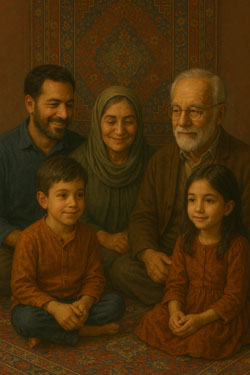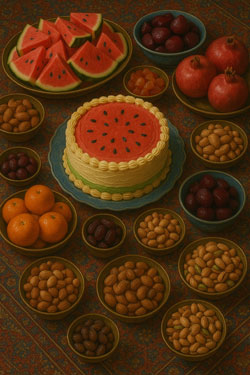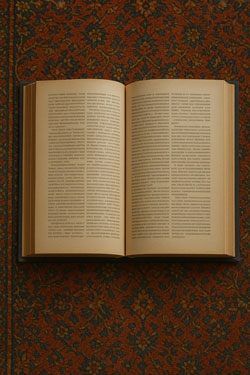Historical Roots
Yalda Night (شب یلدا) is an ancient Persian festival celebrated on the longest and darkest night of the year, which is exactly the beginning of winter in Persian calendar (around December 20-21). Yalda is a Syriac word meaning “birth” and it refers to the Sun God, Mithra. Mithra is the Zoroastrian deity of light, truth, and justice.
The festival marks the triumph of light over darkness, as the night of the winter solstice symbolises the rebirth of the sun and longer days ahead. Ancient Persians believed that Yalda Night is one minute longer than any other nights of the year. That is why it is called the longest night of the year. The following day, sunlight represented victory over darkness, and it was considered an auspicious start to year’s winter season.


